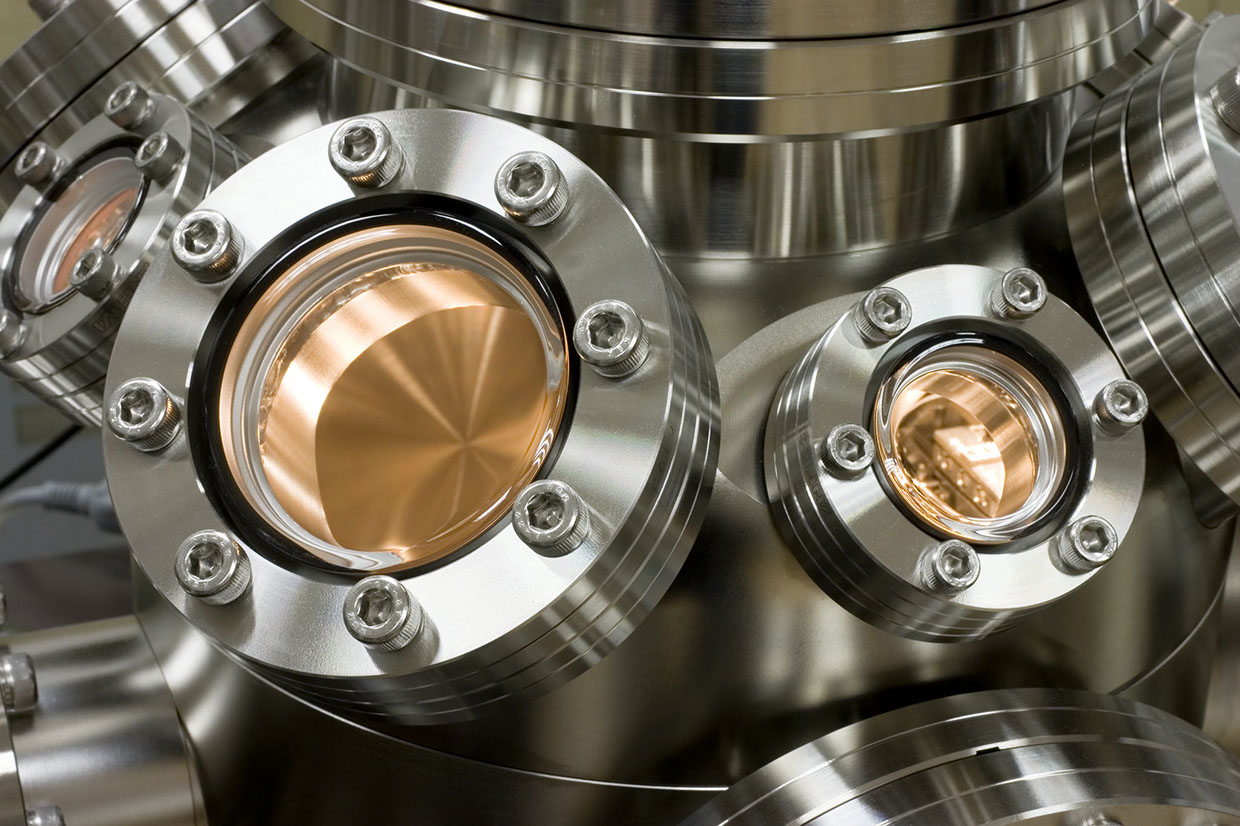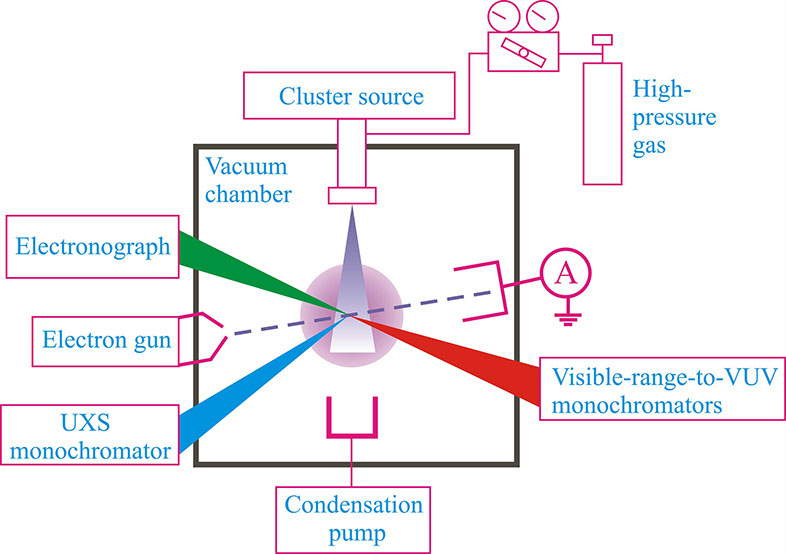
Research complex for spectroscopic and structural studies of free mono- and multicomponent nanoclusters
Abstract:
The research complex is a composite multifunctional apparatus designed for producing substrate-free atomic and molecular clusters of various structure and size ranging from 2 to 106 atoms per cluster and carrying out spectroscopic and structural studies.
The complex was created to solve applied and fundamental problems of atomic and molecular physics, chemistry, molecular biology, solid state physics, nuclear physics, physics of plasma, and astrophysics, which include these:
• investigation of structure and composition of mono- and multicomponent nanoclusters;
• study of clusterization effect on the dynamics of nanocluster electronic subsystem;
• simulation of collision of neutral and charged nanoclusters with solid surfaces;
• creation of cluster sources of vacuum ultraviolet (VUV) and ultrasoft x-ray (USX) radiation for the purposes which include among others simulation of solar
radiation outside the earth’s atmosphere;
• investigation of effects of VUV and UXS radiation on various constructional materials and biological objects.

Description:
The research complex includes:
• a supersonic cluster-beam generator;
• an electron diffraction apparatus designed to study structure, phase composition, temperature, and average size of clusters;
• monochromators allowing spectroscopic studies of cluster and atomic beams in a wide wavelength range of 1-800 nm;
• an electron gun to excite and ionize cluster beams (with electron energy ranging from 80 to 2000 eV and current varying from 1 to 100 mA);
• a source of UV radiation for photoexcitation of nanoclusters at the wavelengths 115-200 nm.
Areas of application:
• Investigating structural transformations between amorphous, quasicrystalline (with a 5-fold axis of symmetry), and crystalline (fcc, hcp) phases in
nanoclusters of argon, krypton, xenon, nitrogen, carbon dioxide, and methane.
• Finding cluster average sizes, temperature, and crystalline lattice parameters.
• Studying size effects on relaxation of electronic excitations in mono- and multicomponent nanoclusters.
• Investigating formation of polarization bremsstrahlung and ordinary bremsstrahlung for electrons of various energies scattered on cluster and atomic targets.
• Studying clusterization effect on spectral composition and intensity of nanocluster sources of radiation.
• Studying the way VUV and USX radiation affect durability of materials used in space engineering.
Advantages:
• Free nanoclusters are generated in a supersonic jet expanding adiabatically into a vacuum, which thus excludes any substrate-related effects on the
clusterization process. The method also reduces the amount of undesired impurities that penetrate into nanoclusters from the ambient medium.
• Intensity and composition of cluster beam can be largely varied by varying primary gas parameters at the nozzle inlet and using nozzles with different
configurations.
• VUV and USX radiation of nanocluster sources can be let into test chambers without using separating windows and differential pump-out systems.
Keywords:
Nanocluster, VUV and USX radiation, supersonic jet, structural transformation, relaxation of electronic excitation.
Last updated: 03/08/2025
Contacts
47 Nauky Ave., Kharkiv, 61103, Ukraine
tel.: +380(57)341-0918
fax: +380(57)340-3370
© 2017-2025, Design by Anton Klimkin
Executive editor: V.A.Gudimenko
v.2024.2.10


